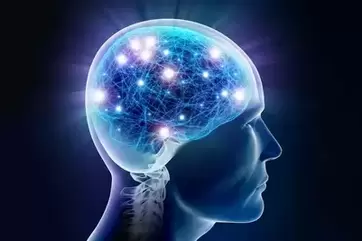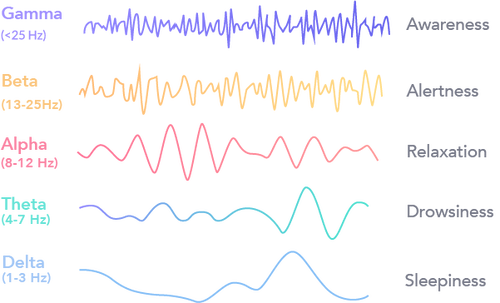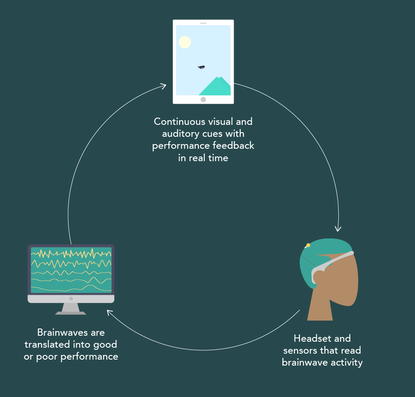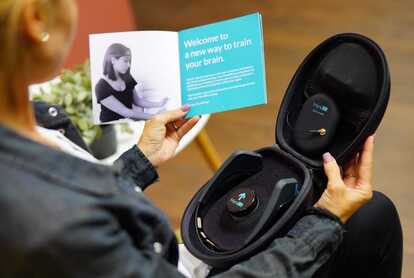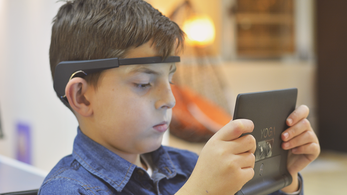Neurotherapy: A Powerful Form of Brain Training
Neurotherapy (also called neurofeedback or EEG biofeedback) is a powerful and precise form of brain training based on neuroscientific research showing that the human brain is capable of dramatic change and healing with the right stimulation and training. This concept, known as neuroplasticity, has opened up the possibility of "rewiring" the brain to treat a large number of difficult conditions in both children and adults.
|
Neurotherapy boosts the connectivity of neurons and allows different parts of the brain to more effectively communicate with each other. It teaches the brain to produce healthier brainwave patterns, resulting in enhanced mental performance, reduced anxiety and stress tolerance, improved focus, better emotional management, a calmer state of mind, and more.
|
The efficacy of neurotherapy has been studied for nearly 40 years since its early applications by NASA. In the last 20 years, research in this field has grown exponentially, with numerous controlled studies showing significant positive outcomes.
Brainwaves and Brainwave Dysregulation
The human brain is a powerful and highly complex organ that is made up of billions of brain cells (neurons). The total number of neural connections in the brain is as large as the number of stars in our galaxy. All of our emotions, thoughts, and behaviors are communicated among our brain cells through electrical signals, which can be measured by an EEG (electroencephalogram) device and visually displayed in the form of wave-like patterns - hence the term brainwaves.
This results in brainwave dysregulation (also known as neurological dysregulation). Think of it as the brain being stuck in the wrong gear. Symptoms associated with brainwave dysregulation can include the following:
|
|
How Does Neurotherapy Work?
Neurotherapy works in similar way to how one learns to ride a bike. Through a concept called operant conditioning, you learn how to balance by making small adjustments and feeling the feedback of balance or falling. Eventually, with enough feedback and practice, your brain learns how to ride a bike. After that, it feels completely natural.
|
Similarly, through the use of a brainwave-reading EEG headset and special neurotherapy software, we can teach our brains to snap into the optimal state of mind. As the EEG feedback tells you what is happening in your brain in real-time, you can actively train it to find balance. As a result, you can finally take control of your brain and learn to achieve an optimal state of mind on-demand.
|
Do I have to Come to the Clinic For Every Session?
No. Traditionally, a visit to a clinic was required for every single neurotherapy session, which made it quite time-consuming and inconvenient. However, thanks to the latest technological advancements, we are able to offer a convenient system that allows you to complete your sessions in the comfort of your own home - or anywhere you like - through the use of a portable EEG headset and a tablet or smartphone.
Is Neurotherapy Safe? How Does It Compare to Drug-Based Treatments?
Numerous studies have confirmed that, beyond being safe, neurotherapy is as effective if not more effective and durable than medication-based treatments. Furthermore, it aims to resolve problems at the root (i.e., the brain) rather than temporarily mask the symptoms. It therefore produces longer-lasting results without the major disadvantage of tolerance and side-effects common with medication.
How Many Sessions Are Needed to See Results?
The number of neurofeedback therapy sessions it takes to see tangible results is different for every individual and depends on the severity of symptoms. While most begin to experience some relief or change after just a few sessions, a consistent treatment plan that includes the completion of at least two sessions per week is generally needed to yield meaningful benefits. We determine the number of sessions for every individual based on our initial evaluation, EEG brain assessment, and the subsequent progress that is shown.
LOCATION:Ekdom Neuropsychology Group
3040 Williams Drive Suite 402 Fairfax, VA 22031 office Hours:Monday-Friday: 9:30am-4:30pm
Saturday-Sunday: Closed (By Appointment Only) |
© Copyright 2022 - Brain Diagnostics & Treatment Center LLC

